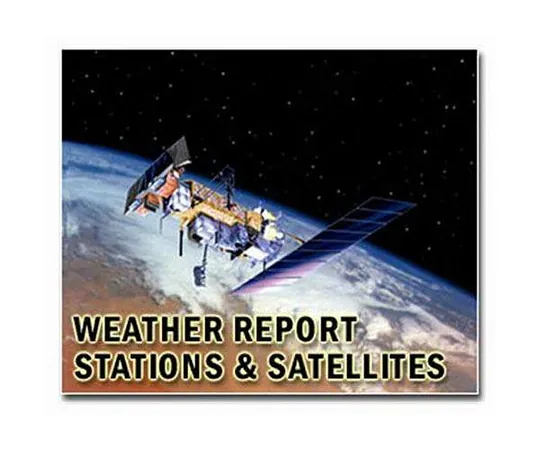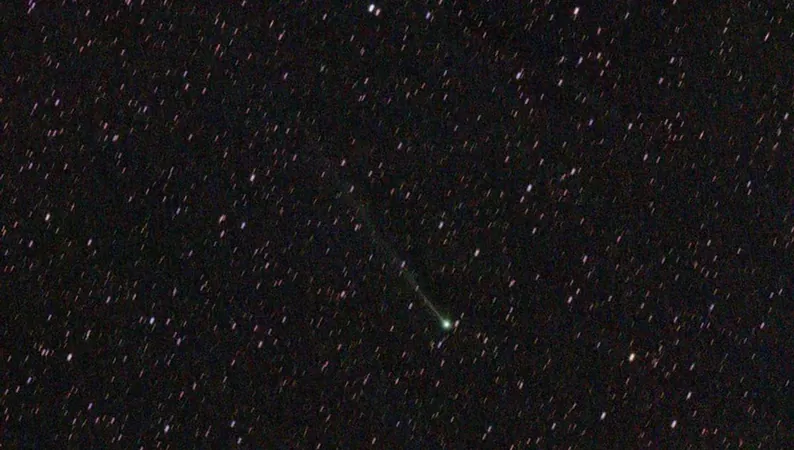
Revolutionary Weather Satellite Launched to Enhance Storm Forecasting
2025-04-09
Author: Sarah
NOAA Unveils Final Satellite for Advanced Weather Monitoring
In a groundbreaking achievement, the National Oceanic and Atmospheric Administration (NOAA) has officially launched its latest weather satellite, GOES-19, completing a powerful fleet designed to transform forecasting both on Earth and in space.
Launched on June 25, 2024, GOES-19 replaces its predecessor, GOES-16, orbiting 22,236 miles above the equator. This advanced satellite is set to enhance the Geostationary Operational Environmental Satellites (GOES-R) series, establishing the most sophisticated weather observation system in the Western Hemisphere.
Stephen Volz, NOAA’s assistant administrator for Satellite and Information Service, declared, “With GOES-19 operational, we have deployed the most advanced technology ever sent into space to aid in predicting weather events on our planet.”
Broadening Environmental Insight
Equipped to track hurricanes and tropical storms across the Atlantic, GOES-19 doesn't stop there. Its capabilities extend to monitoring critical environmental phenomena, including severe weather occurrences, atmospheric rivers, wildfires, and volcanic eruptions.
Additionally, it houses the inaugural compact coronagraph instrument, CCOR-1, specifically engineered to observe solar activities. According to Clinton Wallace, director of NOAA's Space Weather Prediction Center, this capability represents a "game-changer" for the nation’s readiness against solar storms, offering real-time insights into massive solar eruptions.
Enhancing Safety and Security
Wallace emphasized the importance of CCOR-1, stating, “With significantly improved resolution and quicker detection, we can better predict hazardous space weather that affects satellites, GPS systems, aviation, and even power grids. This ensures the protection of vital technology and infrastructure like never before.”
A Powerful Fleet Ready for Action
GOES-19 now joins its counterpart, GOES-18, launched in March 2022, forming an extensive network of satellites that observe vast territories from Africa to New Zealand, and from polar regions to the equator.
This fleet is poised to provide crucial data, especially as the 2025 Atlantic hurricane season approaches—a season expected to rival the disastrous 2024 season, which wreaked havoc across the Southeast and Florida due to storms named Beryl, Helene, and Milton.






 Brasil (PT)
Brasil (PT)
 Canada (EN)
Canada (EN)
 Chile (ES)
Chile (ES)
 Česko (CS)
Česko (CS)
 대한민국 (KO)
대한민국 (KO)
 España (ES)
España (ES)
 France (FR)
France (FR)
 Hong Kong (EN)
Hong Kong (EN)
 Italia (IT)
Italia (IT)
 日本 (JA)
日本 (JA)
 Magyarország (HU)
Magyarország (HU)
 Norge (NO)
Norge (NO)
 Polska (PL)
Polska (PL)
 Schweiz (DE)
Schweiz (DE)
 Singapore (EN)
Singapore (EN)
 Sverige (SV)
Sverige (SV)
 Suomi (FI)
Suomi (FI)
 Türkiye (TR)
Türkiye (TR)
 الإمارات العربية المتحدة (AR)
الإمارات العربية المتحدة (AR)